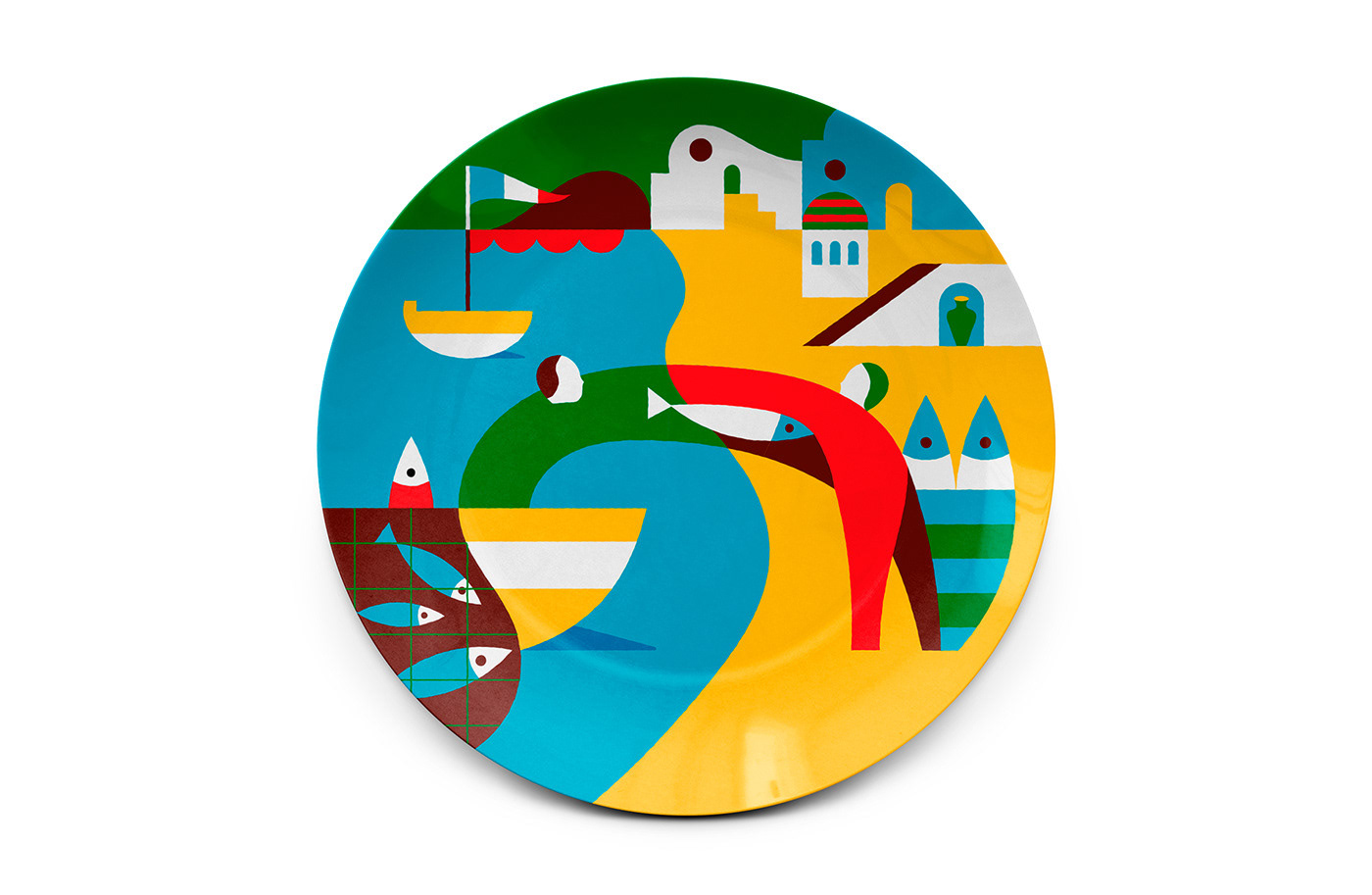Kutch nahi kiya, toh kuch nahi kiya!
(If you haven't been to Kutch, you've been nowhere!)
During our course, Traditional Textiles, we were also taken for a short visit to Kutch, a haven for textile lovers, to understand better and see for ourselves how traditional textiles are made. We visited many places: Mundra, Bhujodi, Adoi, Dhamadka, LLDC, Kalaraksha and Kukma.
Bhujodi
We went to Bhujodi Weaving centre quite early in the morning. Soothing chants of the weavers seeking blessing of the gods before commencing work fills the air at this hour.


Brush used for starching the warp before weaving.


A woman warping at Bhujodi

Bhujodi primarily engages in Indigo/natural dyeing and weaving.
The vats were made of concrete which wasn't as pressed as concrete usually is (to imitate the porous quality of the traditional terracotta vats).
Vats require to be fed with a constant diet of dates and lime (chuna) to maintain the pH level of the vat. Chuna helps neutralise the acidity caused by fermentation.
Vats require to be fed with a constant diet of dates and lime (chuna) to maintain the pH level of the vat. Chuna helps neutralise the acidity caused by fermentation.
The looms used for weaving are pitlooms.


Vankar Vishram Valji demonstrating indigo dyeing in one of the vats for us
Indigo dyeing is traditionally done by Khatris, however with the passage of time the crafts expanded and knowledge exchanged and other communities started indigo dyeing as well
(in this case the Vankar community).
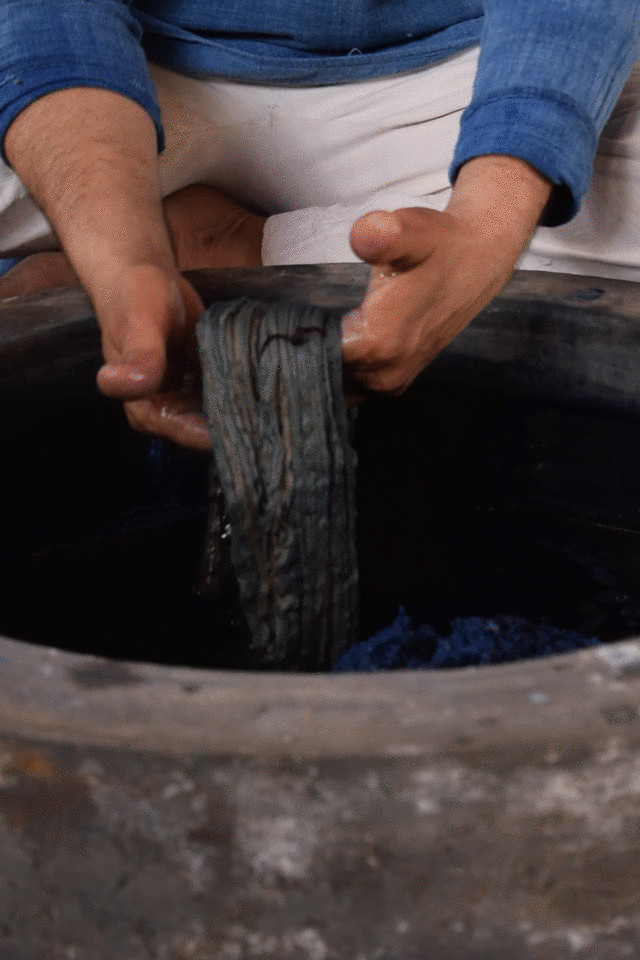
The goat droppings and broken terracotta around the vats help in maintaining a constant temperature of the vat since temperatures in Kutch fluctuate a lot.
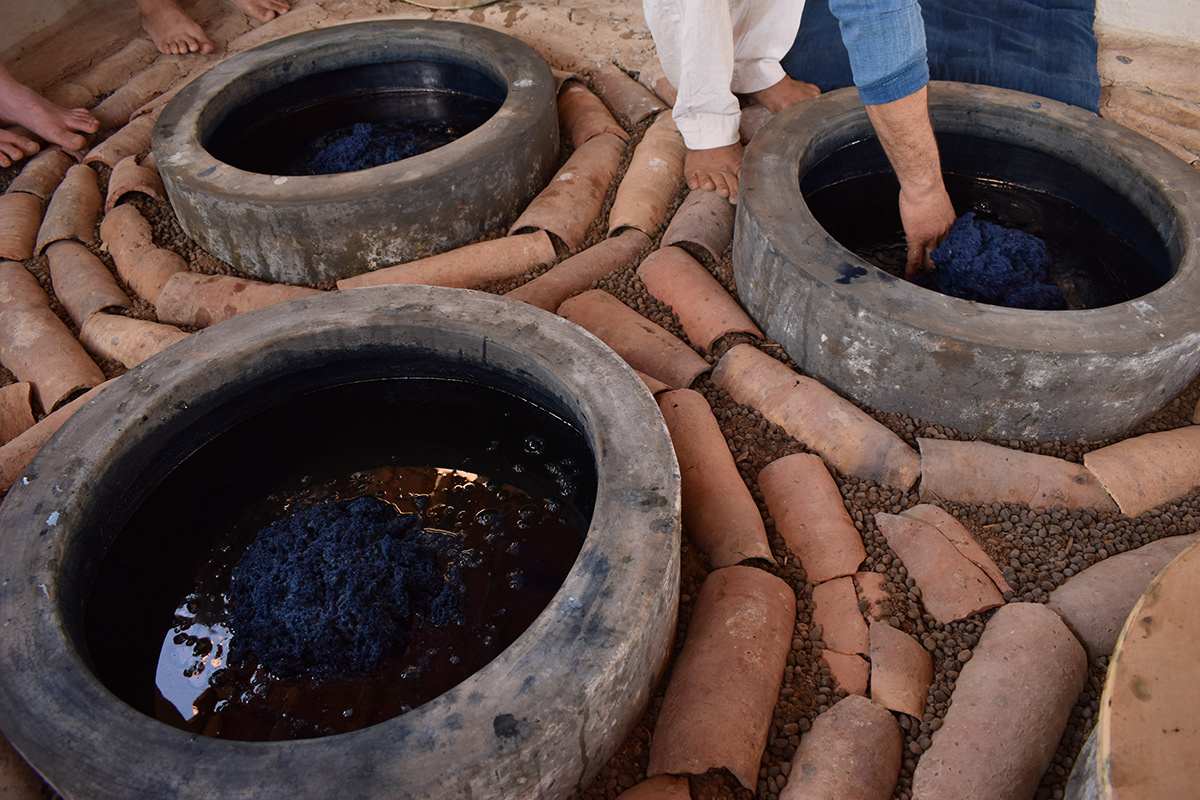
Indigo and lac dyed hanks hung to dry. Acacia and amla is used for obtaining dark tones (black to grey).
A specie of poisonous wild onion which grows locally is used for starching the warp before weaving. It is said that it has such powerful antibacterial properties that once the warp is starched with it, it can never be attacked by pests, moths, fungus or other degrading bacteria.
A specie of poisonous wild onion which grows locally is used for starching the warp before weaving. It is said that it has such powerful antibacterial properties that once the warp is starched with it, it can never be attacked by pests, moths, fungus or other degrading bacteria.

Visit to
Ajrakh Block-printing at Dhamadka
clockwise L-R: Mahesh Bhai (staff weaver at NID), Govind Bhai (staff weaver at NID), Adam Khatri (son), Sucharita Beniwal (faculty at NID), Abdul Jabbar Khatri (father and mastercraftsman)

Fabric being scoured in huge tanks before block-printing


Rekh...Datta...Gad
The basics of block-printing, Rekh refers to the first block or the outlining block, Datta is the second color or the filler and Gad is the third color of the base/background filler. Ajrakh uses resist blockprinting and natural color printing to achieve its characteristic effect.




After the fabric is block printed it is taken for dyeing. But before dyeing, it is mordanted with alum brushed onto the fabric as shown below.

Indigo laced soils of Kutch...
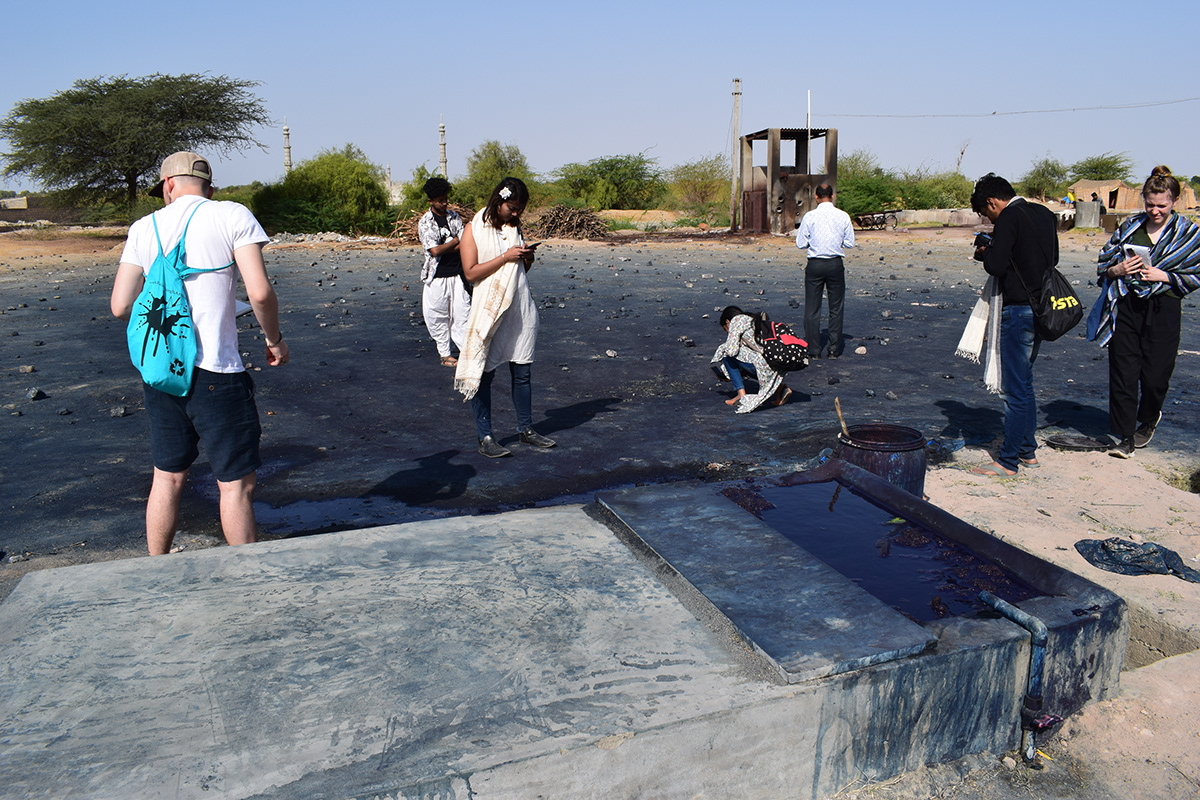
Myrobalan (dye/mordant) and alizarine dye-baths


Bandhani (tie & dye) by Adil Mustak Khatri
Khatris have been engaged in Tie and Dye since many generations.
It has become a marker of their community.
The piece shown below is a bridal outfit with extremely fine bandhani work. The combination of black and red with bandhani is traditionally used in wedding attire in Khatri community.

The fabric is first tied and then dyed. The process starts off by transferring the design onto the fabric using temporary dye and a plastic sheet with perforations pertaining to the design. The fabric is then tied in the marked places and dyed.






(left) Bharti work: Fine bandhani to fill up space
(right) Circum/line work: Bandhani with only outlined circles


Bridal trousseau bandhani piece

Kharad Weaving
Kharad weaving is a disappearing craft. Only a handful of families remain in Kutch who still practice the craft. It is made of camel, goat and sheep wool and vegetable dyes.

(left) Punja used to beat the weft
(right) Kharad recently taken off loom and being finished by hand


Kharad weaving is extremely time consuming and often only 3-5 pieces can be made in a month. The picture below shows workers weaving a Kharad consisting of multiple wefts simultaneously to achieve the desired pattern.
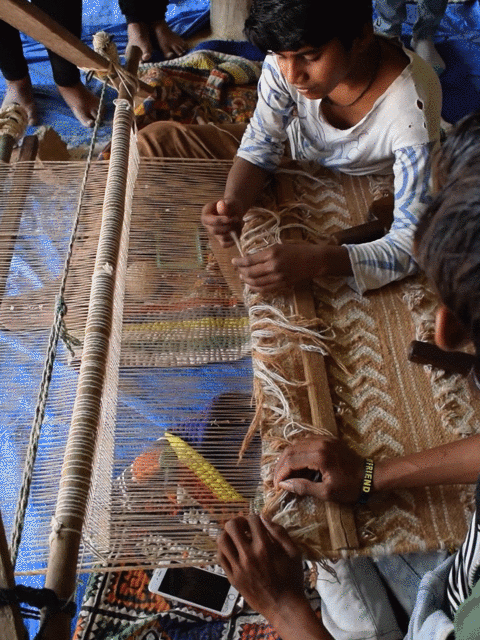
Vegetable dyed wool hung up to dry

Batik Printing
Shakeel Ahmed Khatri and his family are one of the well-known families of Kutch who have been engaged in this craft for many decades now. Batik is an age-old craft tradition of the region. It uses resist (here, wax) block printing technique to obtain its characteristic effect. Here are the snippets of our visit to his workshop in Mundra.

After the mill fabric is scoured the first round of printing is done with wooden bocks and paraffin wax. In India batik is done with paraffin wax since it cracks and cracks are seen as a desirable quality of batik, however, in Indonesia, batik is done with beeswax so that it doesn't crack which is otherwise considered a defect.
resist...dye...resist...dye




The workshop being quite small has dedicated every inch of its being to work. The walls of the printing room are full of heaps of blocks.
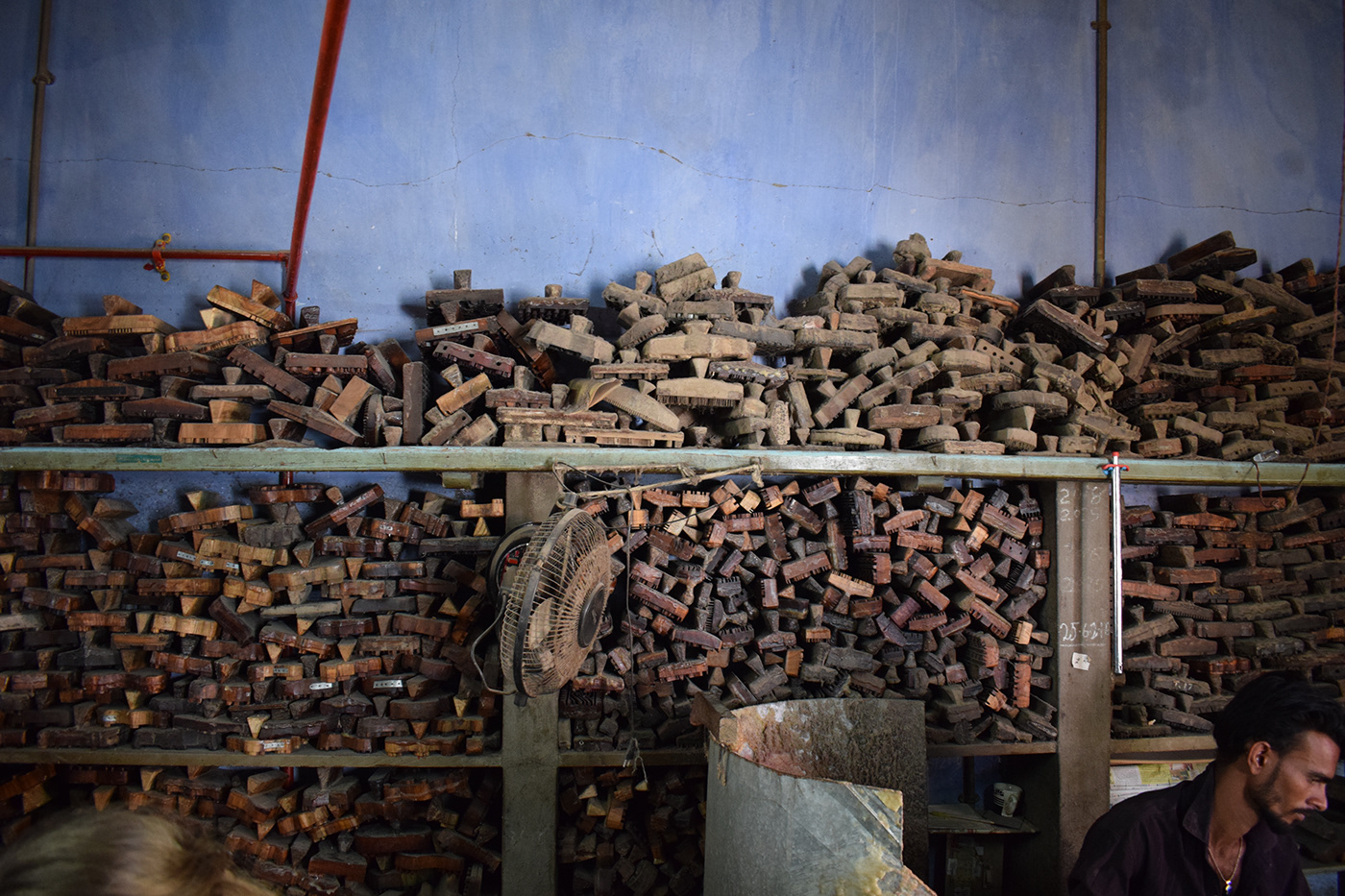
The wax is kept at a very constant temperature to make sure the consistency is perfect and constant. To cool and fix the wax quickly while printing, the printing itself is done on a table lined with a thick layer of sand sprayed with water which stays very cold and sets it almost immediately.
(right) Tin pans containing used wax from previous printed batches.



Tangaliya Weaving, Adoi
Before leaving Kutch we also made a short visit to the Weaver's Centre in Adoi where young weavers were being trained in the craft of Tangaliya weaving. Tangaliya is a unique method of on-loom embellishment of fabric where little beads are rolled onto the warp ends and woven into the fabric.



Course guide: Mrs. Sucharita Beniwal
